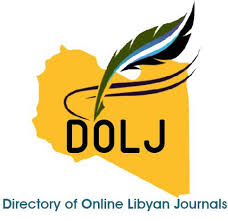Dose Profiles Distribution of 6 MV Linear Accelerator Using Monte Carlo Code System for Optimum Treatment planning in Radiotherapy Department
DOI:
https://doi.org/10.54361/ljmr.17-13Keywords:
SPECT, attenuation, scattering, correction, gamma camera, radiopharmaceutical, photopeak energy, Monte Carlo Computer CodeAbstract
Monte Carlo (MC) radiotherapy treatment planning has become practical in medical physics, particularly with the rapid development of computer technology. Requires detailed knowledge of linear medical accelerators (Linacs) beam radiation. In the present work the basic dosimetric properties of the 6-MV photon beam and the Varian Clinic 600CLinac were examined. The dosimetric features of interest are, the absorbed dose from the central axis, beam profiles, photon blockers, electron and positron, mean energy, spectral distribution, and isodose curves. Varian Clinic 600C Linac is simulated using the OMEGA BEAMnrc MC code system. Detailed spectra of phase space profiles of a photon beam with a field of view of 10 cm × 10 cm were modeled, simulated and finally analyzed using BEAMdp. The central axis depth dose curves, dose profiles and isodose curves for photon beams in the aqueous phantom were also recorded and analyzed using the DOSXYZnrc, STATDOSE and DOSXYZ_SHOW code. This study demonstrates that MC can generate phase space data files that can be used to generate accurate MC dose distributions for photon beams produced using a high-powered clinical linear accelerator in a water phantom or in patients for radiotherapy.
Downloads
References
Rogers, D. W., W. B., et al. (2007). "BEAMnrc User's Manual." Report PIRS 0509.
Rogers, D. W., B. A. Faddegon, et al. (1995). "BEAM: a Monte Carlo code to simulate radiotherapy treatment units." Med Phys 22 (5): 503-24.
Rogers, D. W., B. Walters, et al. (2004). "DOSXYZnrc User's Manual." Report PIRS 794.
Rogers, D. W. O. and A. F. Bielajew (1990). "Monte Carlo Technique of Electron and Photon Transport for Radiation Dosimetry." The Dosimetry of Ionizing Radiation - Academic Press 3 : 427-539.
Johns, H. E. and J. R. Cunningham (1983). "The Physics of Radiology." (4th edition).
van Dyk, J. (1999). "The Modern Technology of Radiation Oncology – A Compendium for Medical Physicists and Radiation Oncologists." Medical Physics Publishing.
Khan, F. M. (2003). "The Physics of Radiation Therapy." Lippincott Williams & Wilkins(3 edition ).
Luis Alberto Vazquez- Quino et al “Monte Carlo modeling of a Novalis TX Varian 6 MV with HD-120 multileaf collimator” J Applied Clinical Med Phys, 13(5), 2012
Yang J, Li J, Chen L, Price R, McNeeley S, Qin L, et al. Dosimetric verification of IMRT treatment planning using Monte Carlo simulations for prostate cancer. Phys Med Biol 2005;50(5):869–78.
othman I E et al Hot Particle Dosimetry, Part-III: Enhanced EGSnrcMP Dose Estimates over EGS4 for a 106 Ru/Rh Hot Particle, Compared to Measurements using Imaging Photon Detector, RadioChromic Dye Film and Extrapolation Chamber, The Second Symposium on Theories and Applications of Basic and Biosciences 5 September 2015
Othman, I. E., Charles, M. W. and Darley, P. J. "Beta dose measurements and calculations around 170Tm model hot particle using the Monte Carlo code EGS4 and Thermoluminescence Imaging Photon Detector" Intern. Conf. on Advanc. Monte Carlo for Radiat. Phys., Part. Trans. Simulat. and Apps., Lisbon, Portugal 23-26 Oct. (2000).
Darley, P. J., Othman, I. E. and Al-Aydarous, A. Sh., "Dosimetry intercomparisons for 106Ru Hot Particles"University of Birmingham, Radiation Dosimetry Group, PR HPD/00/01 (2000).
Darley, P. J., Othman, I. E. and Al-Aydarous, A. Sh.," Hot Particle Radiation Dosimetry: Development and validation of measurement and calculation techniques" University of Birmingham, Radiation Dosimetry Group, FR HPD/00 (2000).
Adamiec, G. and Othman, I. E. "Evaluation of dose distributions around hot particles by means of TL measurements" The University of Oxford, Research Laboratory for Archaeology and the History of Art, REP; GR-766-310-A (1999).
Darley, P. J., Charles, M. W., Othman, I. E., Al-Aydarous, A. Sh., and Mill, A. J., "Origins and dosimetry of 'hot particles' from nuclear plant operation" Radiat. Prot. Dosim. 92 (1-3) 131-137 (2000).
Darley, P. J., Villarreal Barajas, J. E. and Othman, I. E. " Hot Particle Radiation Dosimetry: Development and validation of measurement and calculation techniques for hot particles" University of Birmingham, Radiation Dosimetry Group, AR HPD/99 (1999).
Yamamoto T, Mizowaki T, Miyabe Y, Takegawa H, Narita Y, Yano S, et al. An integrated Monte Carlo dosimetric verification system for radiotherapy treatment planning. Phys Med Biol 2007;52(7):1991–2008.
Rogers DWO, Faddegon BA, Ding GX, Ma C-M, We J, Mackie TR. BEAM: A Monte Carlo code to simulate radiotherapy treatment units. Med Phys 1995;22(5):503–24.
Kawrakow I, Walters BRB. Efficient photon beam dose calculations using DOSXYZnrc with BEAMnrc. Med Phys 2006;33(8):3046–56.
Joao Seco and Frank Verhaegen, Monte Carlo Techniques in Radiation Therapy, Editors ISBN: 978-1-4665-0792-0
Chetty et al.: Report of the AAPM Task Group No. 105: Issues associated with clinical implementation of Monte Carlo-based photon and electron external beam treatment planning, Med. Phys. 34(12), December 2007.
Downloads
Published
Issue
Section
License
Copyright (c) 2023 M. I. A. Koshlaf , K. L. Adullatif (Author)

This work is licensed under a Creative Commons Attribution-NonCommercial-NoDerivatives 4.0 International License.
Open Access Policy
Libyan journal of medical Research (LJMR).is an open journal, therefore there are no fees required for downloading any publication from the journal website by authors, readers, and institution.
The journal applies the license of CC BY (a Creative Commons Attribution 4.0 International license). This license allows authors to keep ownership f the copyright of their papers. But this license permits any user to download , print out, extract, reuse, archive, and distribute the article, so long as appropriate credit is given to the authors and the source of the work.
The license ensures that the article will be available as widely as possible and that the article can be included in any scientific archive.
Editorial Policy
The publication of an article in a peer reviewed journal is an essential model for Libyan journal of medical Research (LJMR). It is necessary to agree upon standards of expected ethical behavior for all parties involved in the act of publishing: the author, the journal editorial, the peer reviewer and the publisher.
Any manuscript or substantial parts of it, submitted to the journal must not be under consideration by any other journal. In general, the manuscript should not have already been published in any journal or other citable form, although it may have been deposited on a preprint server. Authors are required to ensure that no material submitted as part of a manuscript infringes existing copyrights, or the rights of a third party.
Authorship Policy
The manuscript authorship should be limited to those who have made a significant contribution and intellectual input to the research submitted to the journal, including design, performance, interpretation of the reported study, and writing the manuscript. All those who have made significant contributions should be listed as co-authors.
Others who have participated in certain substantive aspects of the manuscript but without intellectual input should only be recognized in the acknowledgements section of the manuscript. Also, one of the authors should be selected as the corresponding author to communicate with the journal and approve the final version of the manuscript for publication in the LJMR.
Peer-review Policy
- All the manuscripts submitted to LJMR will be subjected to the double-blinded peer-review process;
- The manuscript will be reviewed by two suitable experts in the respective subject area.
- Reports of all the reviewers will be considered while deciding on acceptance/revision or rejection of a manuscript.
- Editor-In-Chief will make the final decision, based on the reviewer’s comments.
- Editor-In-Chief can ask one or more advisory board members for their suggestions upon a manuscript, before making the final decision.
- Associate editor and review editors provide administrative support to maintain the integrity of the peer-review process.
- In case, authors challenge the editor’s negative decision with suitable arguments, the manuscript can be sent to one more reviewer and the final decision will be made based upon his recommendations.













